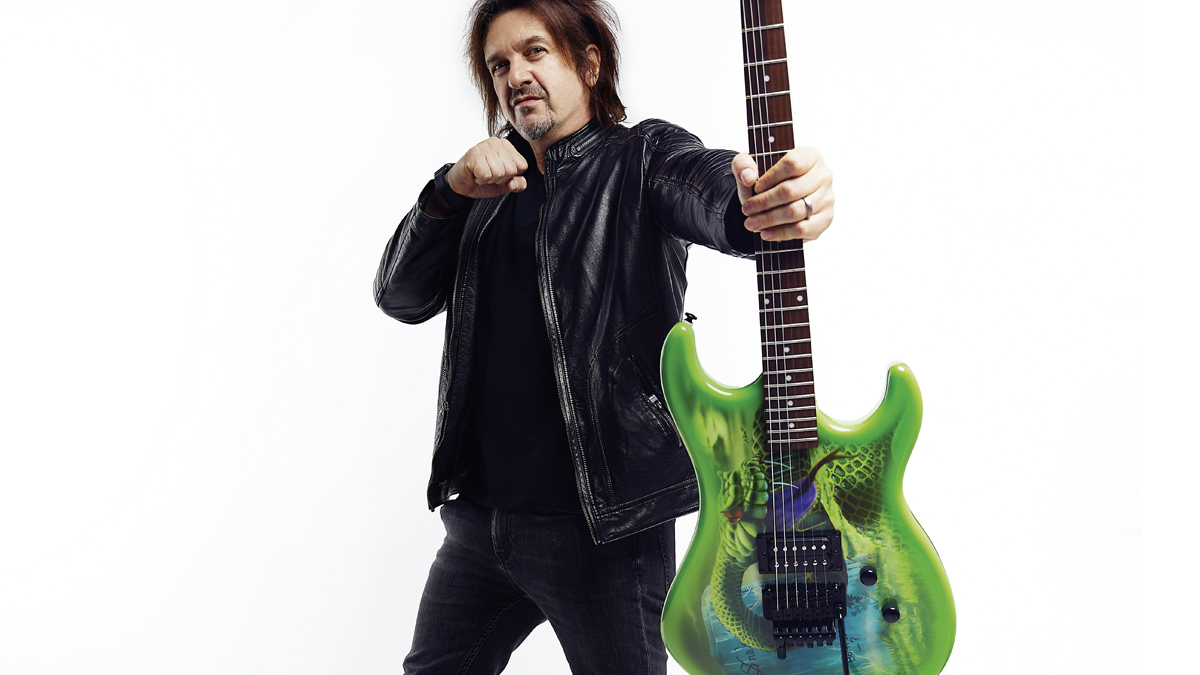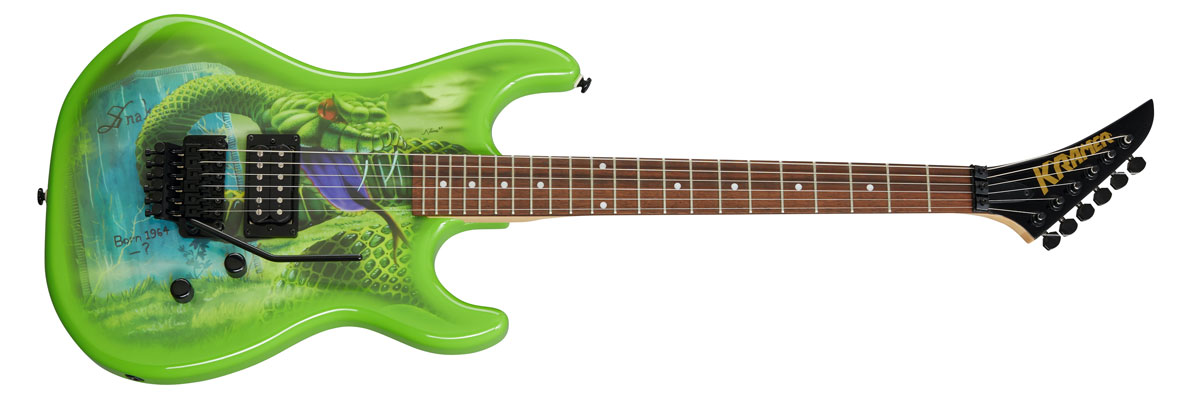Dave “The Snake” Sabo: “I said to Kramer, ‘How about something like a snake coming out of a grave, with my birth date on there?’”
The Skid Row six-stringer unpacks the design choices behind his serpentine signature Kramer Baretta

Dave “Snake” Sabo’s history with Kramer stretches back decades, to when the company was based in Neptune, New Jersey, in the 1980s, and Sabo’s band, Skid Row, was still a few years away from achieving multi-platinum success with their self-titled debut and hard-rock anthems like Youth Gone Wild and 18 and Life.
At the time, Sabo was holding down a day job at Garden State Music, a guitar shop roughly a half hour south of Neptune in Toms River, New Jersey, and playing with an early version of the Skids. “We started working with Kramer and they were so receptive of us,” Sabo recalls. “Skid Row didn’t have a record deal or anything. We were just a band from the neighborhood.”
Sabo’s first Kramer was actually a parts guitar that the company fitted with a Kramer neck. It featured, per Sabo’s preferences, a Floyd Rose trem and a single humbucker, as well as original artwork by Kramer artist Dennis Kline.
“I said to Dennis, ‘How about something like a snake coming out of a grave, with my birth date on there?’” Sabo recalls. “And what he came up with was so amazing. Kramer really fine-tuned that guitar and did their handiwork, and I played all the early Skid Row gigs with it.”
As Skid Row shot to stardom, that Kramer was used to record the band’s smash 1989 debut and the follow-up, 1991’s chart-topping Slave to the Grind, as well as to rock arena and stadium stages alongside the likes of Aerosmith and Bon Jovi.
Fast forward to a few years ago, and Sabo and Skid Row co-guitarist Scotti Hill, who are also big Gibson players – “it’s part of our DNA,” Sabo says – paid a visit to the Gibson factory to meet CMO Cesar Gueikian.
They immediately hit it off. Recalls Sabo, “After a couple of conversations, Cesar said to me, ‘We’re relaunching Kramer and we want to do the Snake guitar.’ I was like, ‘Are you serious?’ It was so humbling.”
Get The Pick Newsletter
All the latest guitar news, interviews, lessons, reviews, deals and more, direct to your inbox!
The guitar they came up with, the Snake Sabo Baretta, pays tribute to Sabo’s original model with a single humbucker, a Floyd Rose (in this case a 1000 Series tremolo fitted with an EVH D-Tuna), a reverse headstock and the original Dennis Kline Snake artwork. “The green finish, it just stands out so well – it’s almost fluorescent,” Sabo says.

Other features include an alder body, a fast-playing three-piece maple neck and a 22-fret Indian laurel fingerboard.
As far as the new guitar’s tone, Sabo points to the addition of a Kramer 85-T Double Black Open Coil Humbucker as a particular sonic upgrade; his original model was loaded, at various times, with a Seymour Duncan and an EMG. But after hearing the Kramer 85-T, designed by Gibson Master Luthier Jim DeCola, Sabo fell in love.
“You hit the gas on that thing and it’s full-on,” he says, noting that his signature model is also the first production Kramer to feature DeCola’s creation. The result is “a guitar that, you plug it in, and it’s ridiculously fierce,” Sabo says. “The original guitar played great, and this plays just as great. But I’ve gotta be honest – I think this Kramer sounds even better.”
Rich is the co-author of the best-selling Nöthin' But a Good Time: The Uncensored History of the '80s Hard Rock Explosion. He is also a recording and performing musician, and a former editor of Guitar World magazine and executive editor of Guitar Aficionado magazine. He has authored several additional books, among them Kurt Cobain: Montage of Heck, the companion to the documentary of the same name.
“I suppose I felt that I deserved it for the amount of seriousness that I’d put into it. My head was huge!” “Clapton is God” graffiti made him a guitar legend when he was barely 20 – he says he was far from uncomfortable with the adulation at the time
“I was in a frenzy about it being trapped and burnt up. I knew I'd never be able to replace it”: After being pulled from the wreckage of a car crash, John Sykes ran back to his burning vehicle to save his beloved '76 Les Paul










